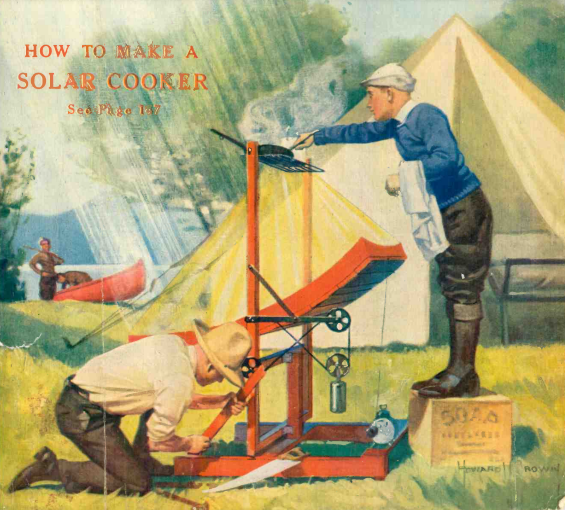 Harnessing the power of the sun to cook your food is nothing new, as shown by this hundred-year-old illustration on the cover of Science and Invention, June 1923.
Harnessing the power of the sun to cook your food is nothing new, as shown by this hundred-year-old illustration on the cover of Science and Invention, June 1923.
The accompanying article, penned by Dr. C.G. Abbott, the assistant secretary of the Smithsonian Institution, isn’t quite a construction article, but it does provide some basic ideas. The model shown above was suitable for camping, or other situations where fuel and power were unavailable. The two concave mirrors, made of tin, reflected the sun onto the cooking surface, the bottom of which was blackened with soot. The complicating factor, possibly unnecessary, is the use of an alarm clock to keep the mirrors aimed.
For situations where it was necessary to cook at night or when there was no sun, the author also described a more complicated system, where the sun heated a reservoir of oil, which was in turn used to provide the cooking heat.
For a simple solar cooker, you can see our earlier post, where we provide plans for construction of a solar oven. If you want to save the work, the solar cooker shown below uses the same principle as the 1923 design, but it somewhat more efficient with the parabolic mirror. If you don’t feel like making your own, solar ovens are surprisingly inexpensive on Amazon.
While these can’t be used in the dark or on cloudy days, having the ability to cook using only the sun’s energy adds flexibility for camping or emergency preparedness.
Some links on this site are affiliate links, meaning that this site earns a small commission if you make a purchase after using the link.
